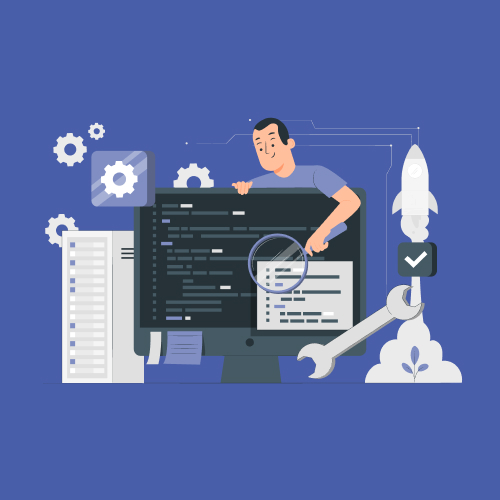Market analyses for 2025 show over 60% of mid-sized companies deploying HR automation software, reflecting a 15% year-on-year growth.
HR automation uses digital tools to handle repetitive human resources tasks—from approvals to reporting—without manual intervention. It spans HR workflow software, HR project management tools, and AI assistants that execute routine actions, enforce compliance, and surface insights in real time.
Why automation in HR processes matters

Manual HR operations often create bottlenecks, compliance gaps, and high administrative overhead. By deploying automation in HR processes via HR workflow software or dedicated HR automation software, organisations unlock several benefits:
- Eliminate bottlenecks: Automated approvals keep requests moving, reducing delays in hiring, onboarding and payroll.
- Increase consistency: Standardised digital workflows prevent manual errors and enforce policy compliance across locations.
- Enhance employee experience: Self-service portals empower staff with instant access to payslips, leave balances and policy documents.
- Cut costs: Reduced paperwork and data entry lower operational expenses and free HR professionals to focus on strategy.
- Strengthen compliance: Built-in audit trails and statutory updates ensure alignment with evolving labour regulations, reducing legal risks.
Overall, automation in HR processes drives speed, scalability and reliability—key factors for competitive advantage in 2025 and beyond.
Key HR processes to automate
- Recruitment and applicant tracking: Streamline candidate screening, interview scheduling and offer management through integrated workflow automation.
- Onboarding: Automate document collection, training assignments and equipment provisioning with self-service checklists and approval routing.
- Attendance and time management: Enable mobile clock-in, geofencing and facial recognition to capture accurate work hours without manual timesheets.
- Leave and absence management: Offer self-service leave requests, automatic balance calculations and multi-tiered approvals.
- Payroll processing: Automate salary calculations, tax compliance and multi-currency payouts to ensure error-free payroll runs.
- Performance management: Schedule periodic reviews, send automated reminders and collect 360° feedback with minimal HR intervention.
- Reporting and analytics: Generate real-time dashboards on headcount, turnover and productivity trends for informed decisions.
| Process | Main Benefit |
|---|---|
| Recruitment | Shorter time-to-hire |
| Onboarding | Higher new-hire engagement |
| Time management | Accurate attendance data |
| Leave management | Faster approvals |
| Payroll | Error-free payouts |
| Performance | Ongoing feedback |
| Reporting | Actionable insights |
How to choose the right HR workflow software

Selecting HR workflow software requires a structured evaluation of your organisation’s needs. Consider these criteria:
- Core functionality: Confirm the platform supports automated approvals, document routing and employee self-service.
- Scalability: Ensure the software scales with headcount growth and adapts to multi-jurisdiction compliance.
- Integration: Verify connectors for existing ATS, payroll, ERP and collaboration tools.
- User experience: Look for intuitive interfaces, mobile access and minimal training requirements.
- Analytics: Assess built-in reporting, dashboards and the ability to export data for deeper analysis.
- Vendor support: Evaluate implementation timelines, training resources and total cost of ownership.
By weighing these factors, HR leaders can choose HR workflow software that drives process efficiency, enhances employee satisfaction and aligns with long-term business goals.
Implementing HR project management tools
Effective deployment of HR project management tools hinges on clear planning and stakeholder engagement. Follow these steps:
- Map processes: Document current workflows and identify automation opportunities in recruitment, onboarding and payroll.
- Define KPIs: Set targets for approval times, error reduction and employee satisfaction metrics.
- Engage stakeholders: Involve HR, IT, finance and department heads to align requirements and secure buy-in.
- Plan rollout: Implement in phases—start with pilot programmes, gather feedback and refine before full launch.
- Train users: Provide hands-on workshops, video tutorials and a dedicated support channel.
- Monitor adoption: Track usage metrics, collect user feedback and iterate to drive continuous improvement.
This structured approach ensures hr project management tools are adopted smoothly and deliver measurable improvements in automation in HR processes.
The next frontier: Proactive people management

- AI chatbots: Handle employee inquiries, policy guidance and routine HR tasks without human intervention.
- Predictive analytics: Forecast turnover, absenteeism and staffing needs to enable proactive workforce planning.
- Hyper-personalisation: Deliver micro-learning modules and customised benefit recommendations based on individual profiles.
- Collaboration integrations: Embed HR workflows into Slack, Microsoft Teams and Workplace for seamless user experiences.
- Blockchain records: Secure, tamper-proof storage of employment history, certifications and compliance documents.
These trends will expand the capabilities of hr project management tools and HR automation software, ushering in an era of proactive, data-driven people management.
Frequently Asked Questions
What is HR automation and why is it important?
Which HR processes can be automated?
How to choose the right HR automation software?
What are the key features of an HR workflow software?
How does HR automation improve compliance and data accuracy?
What ROI can I expect from HR automation tools?
Typical returns include around 50% time savings on administrative tasks, error reduction and improved employee retention metrics.



